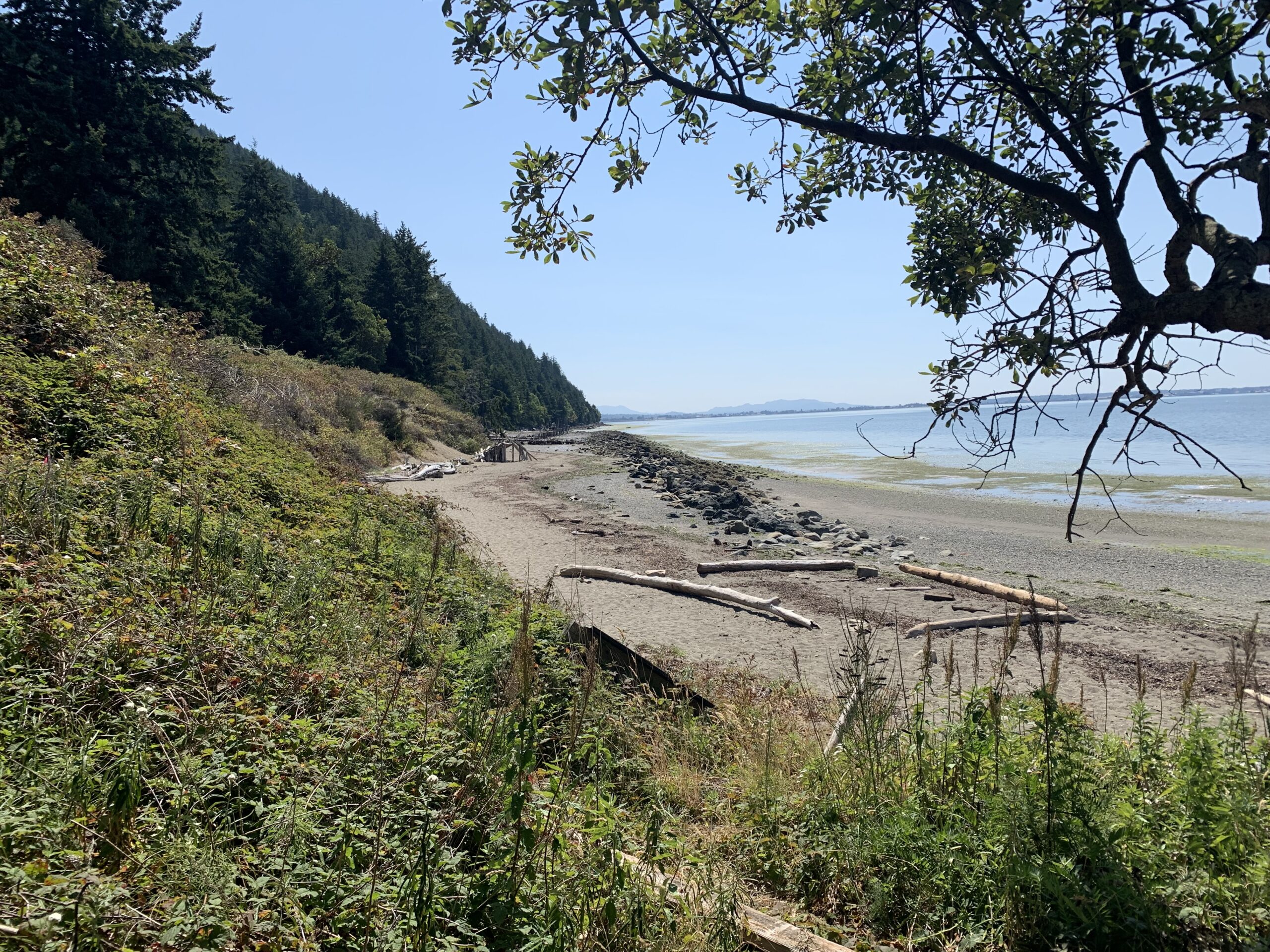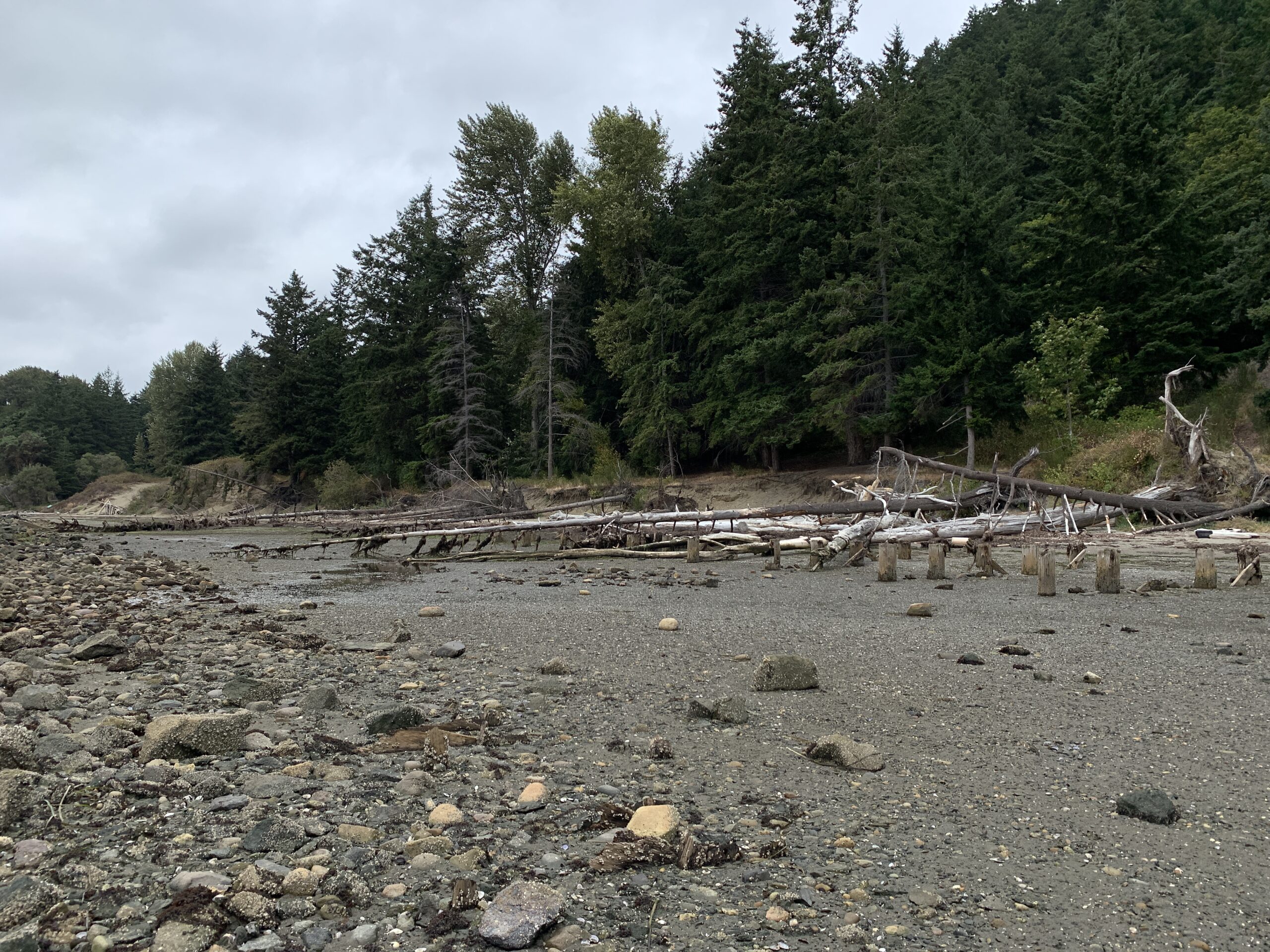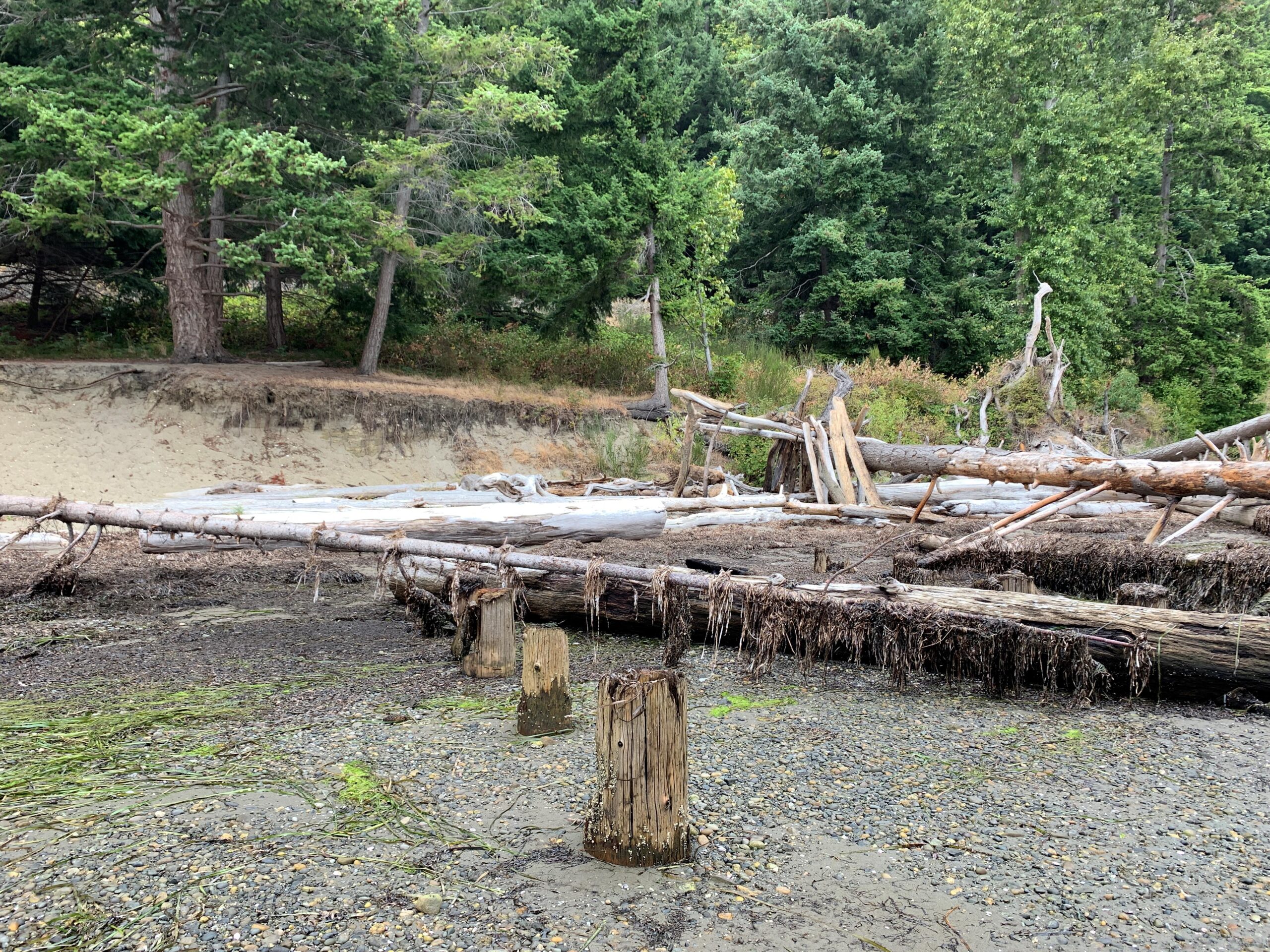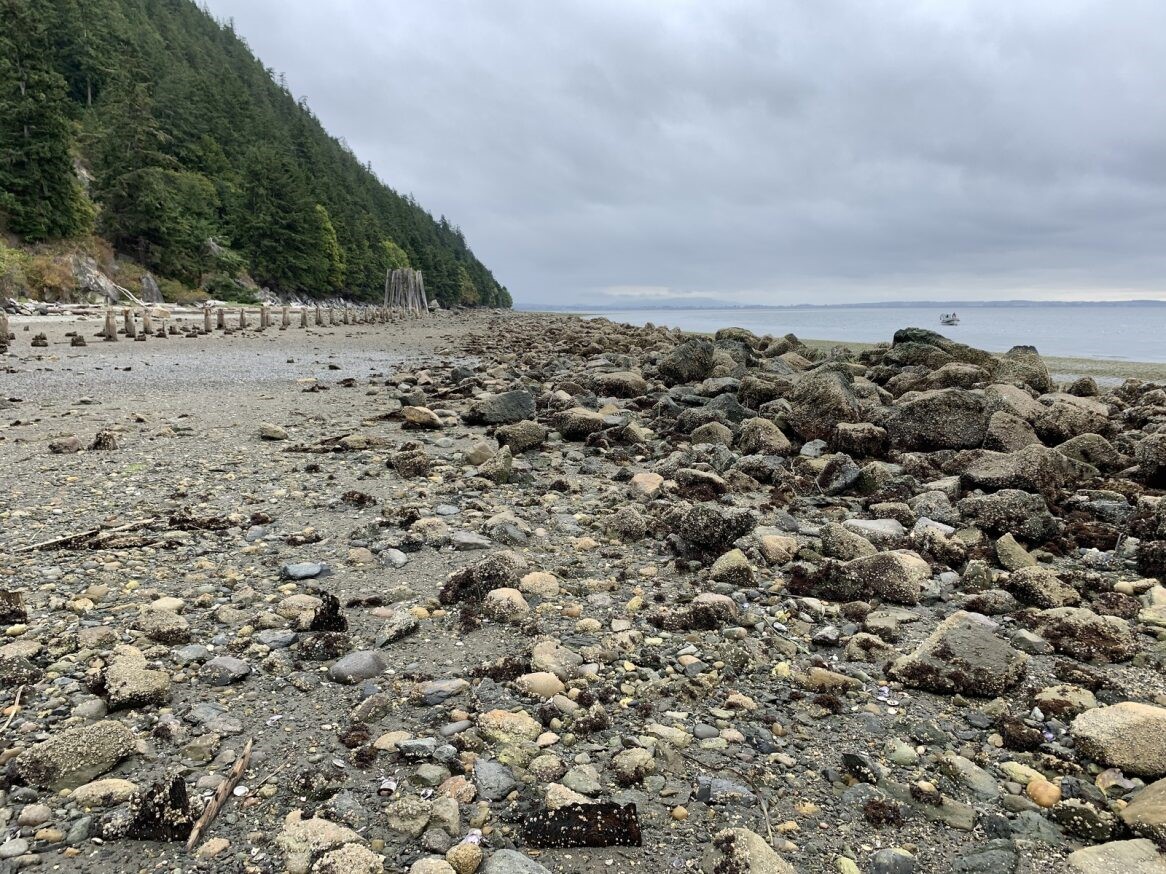Clayton Beach
The Northwest Straits Foundation is partnering with Washington State Parks, Washington Department of Natural Resources, Skagit and Whatcom Marine Resources Committees and others to restore nearshore conditions and enhance degraded habitats at Clayton Beach, located at the south end of Larrabee State Park in Samish Bay, Skagit County.

Starting in approximately 1912, the shoreline at Clayton Beach underwent development to accommodate the construction of the Interurban Trolley, also known as “The Trolley That Went to Sea.”
The current landscape bears witness to the historical remnants of this development, with remaining stubs and riprap scattered along the beach. These remnants are a part of the 5,000 pilings and acres of rock that were employed in the construction of the trestle. The trestle, which served its purpose until 1928, was superseded by the opening of Highway 99 for vehicular traffic.
Offshore, a 13-acre dredge hole remains, serving as evidence of the excavation where sediments were extracted and utilized to support the trestle’s structure. Over the course of nearly a century, these residual features, along with the dredge hole, have exerted a lasting impact on nearshore processes, habitat, structure, and overall environmental quality.
Feasibility studies are underway to determine the most effective restoration actions to support forage fish, migrating juvenile salmon, marine birds and the habitats they rely on including expansion of existing eelgrass beds that provide valuable nursery habitat for a wide range of species. Removal of the shoreline debris will also improve recreational use of the beach.
The Clayton Beach project includes two phases of restoration. The first phase aims to remove over 1,300 linear feet of rock armor, pilings, and debris from the beach. The goal of the second phase is to fill the 13-acre hole that extends to approximately -18 MLLW, aiming to restore eelgrass habitat that was lost due to the historic dredging activities.



Funding acknowledgement: This project has been funded wholly or in part using federal funds from the following agencies and departments: Assistance agreement PC-01J89501 from the United States Environmental Protection Agency through the Washington Department of Fish and Wildlife; Award NA22NMF4690358 from NOAA, U.S. Department of Commerce; Award F22AC02162-00 from the US Fish and Wildlife Service. The contents of this document do not necessarily reflect the views and policies of the Environmental Protection Agency, Washington Department of Fish and Wildlife, NOAA, US Department of Commerce, or US Fish and Wildlife Service.
